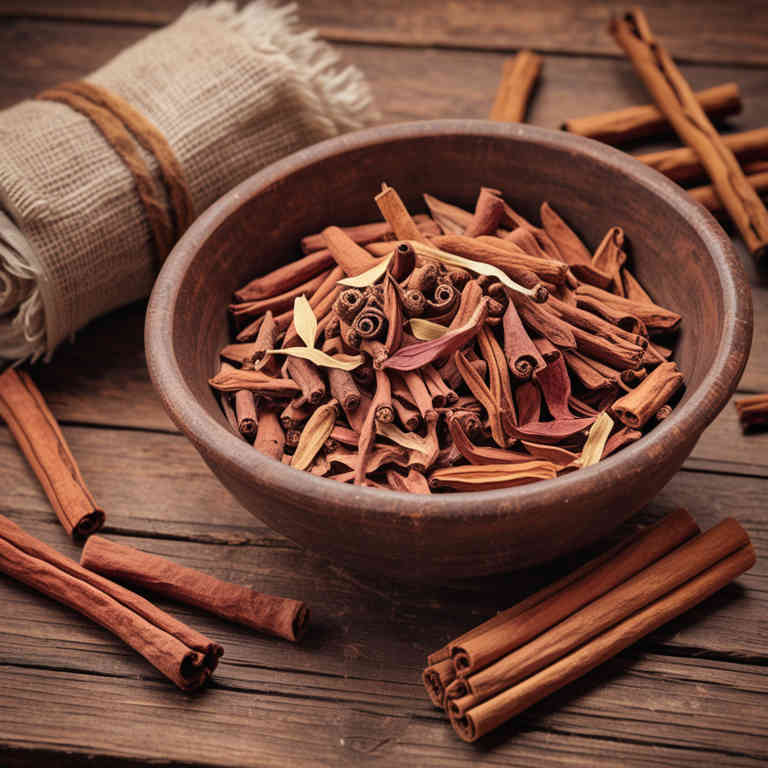Cinnamomum camphora bath for medicinal use

Cinnamomum camphora bath is a traditional herbal preparation made from the bark of the camphor laurel tree, which contains essential oils with aromatic and therapeutic properties.
This bath is used in herbalism to promote relaxation, ease muscle tension, and relieve symptoms of respiratory conditions such as asthma and bronchitis. The camphor derived from this plant has antiseptic, anti-inflammatory, and decongestant qualities that support its medicinal use. It is often added to warm water for soaking, helping to soothe the body and mind.
This preparation has been valued in traditional medicine for its ability to enhance circulation and provide a calming effect.
Uses
Cinnamomum camphora bath has been used to promote relaxation, relieve muscle aches, and treat skin conditions for centuries.
Historically, it was employed in traditional Chinese medicine and other ancient cultures for its soothing and antiseptic properties. The bath is believed to improve circulation, ease inflammation, and provide a calming effect on the mind and body. In modern times, it is still used in aromatherapy and holistic wellness practices for its aromatic and therapeutic benefits.
Its application continues to evolve, integrating traditional wisdom with contemporary wellness trends.
Benefits
Cinnamomum camphora bath has health benefits such as promoting relaxation, easing muscle tension, and improving skin health.
The essential oils derived from this plant have soothing properties that can help reduce stress and anxiety. It is also known to have antimicrobial effects, which may help in maintaining clean and healthy skin. Additionally, the warm water combined with the oils can enhance blood circulation and alleviate symptoms of arthritis or joint pain.
This bath is a natural remedy that supports overall well-being through its aromatic and therapeutic properties.
Constituents
Cinnamomum camphora bath active constituents include essential oils such as camphor, eucalyptol, and limonene, along with tannins and flavonoids.
These compounds contribute to the bath's therapeutic properties by providing antimicrobial, anti-inflammatory, and analgesic effects. Camphor is known for its stimulating and pain-relieving qualities, while eucalyptol helps to clear respiratory passages and promote relaxation. Limonene offers antioxidant benefits and may aid in reducing stress and improving mood.
The combination of these active constituents makes the Cinnamomum camphora bath a popular choice for relieving muscle aches, promoting skin health, and enhancing overall well-being.
Preparation
To make Cinnamomum camphora bath, first gather the necessary ingredients, including 1-2 tablespoons of dried Cinnamomum camphora leaves or bark, a large pot, and a bathtub filled with warm water.
Next, bring the water to a gentle boil in the pot and add the camphor tree leaves or bark, allowing them to steep for about 15-20 minutes. After steeping, carefully strain the liquid into the bathtub, ensuring the water temperature remains comfortable and safe for soaking. Then, soak in the bath for 15-30 minutes to allow the therapeutic properties of the camphor tree to work on the skin.
Finally, rinse off with clean water and pat dry, leaving the skin refreshed and invigorated.
Side Effects
Cinnamomum camphora bath may lead to skin irritation, allergic reactions, or respiratory discomfort in some individuals.
This herbal preparation is often used for its purported soothing and aromatic properties, but it contains compounds that can be harsh on sensitive skin. Prolonged exposure may cause dryness, redness, or itching, especially in those with pre-existing skin conditions. Ingestion of camphor-containing products is particularly dangerous and can lead to severe neurological effects.
It is important to consult a healthcare professional before using this bath, especially for pregnant women, children, or individuals with chronic health issues.